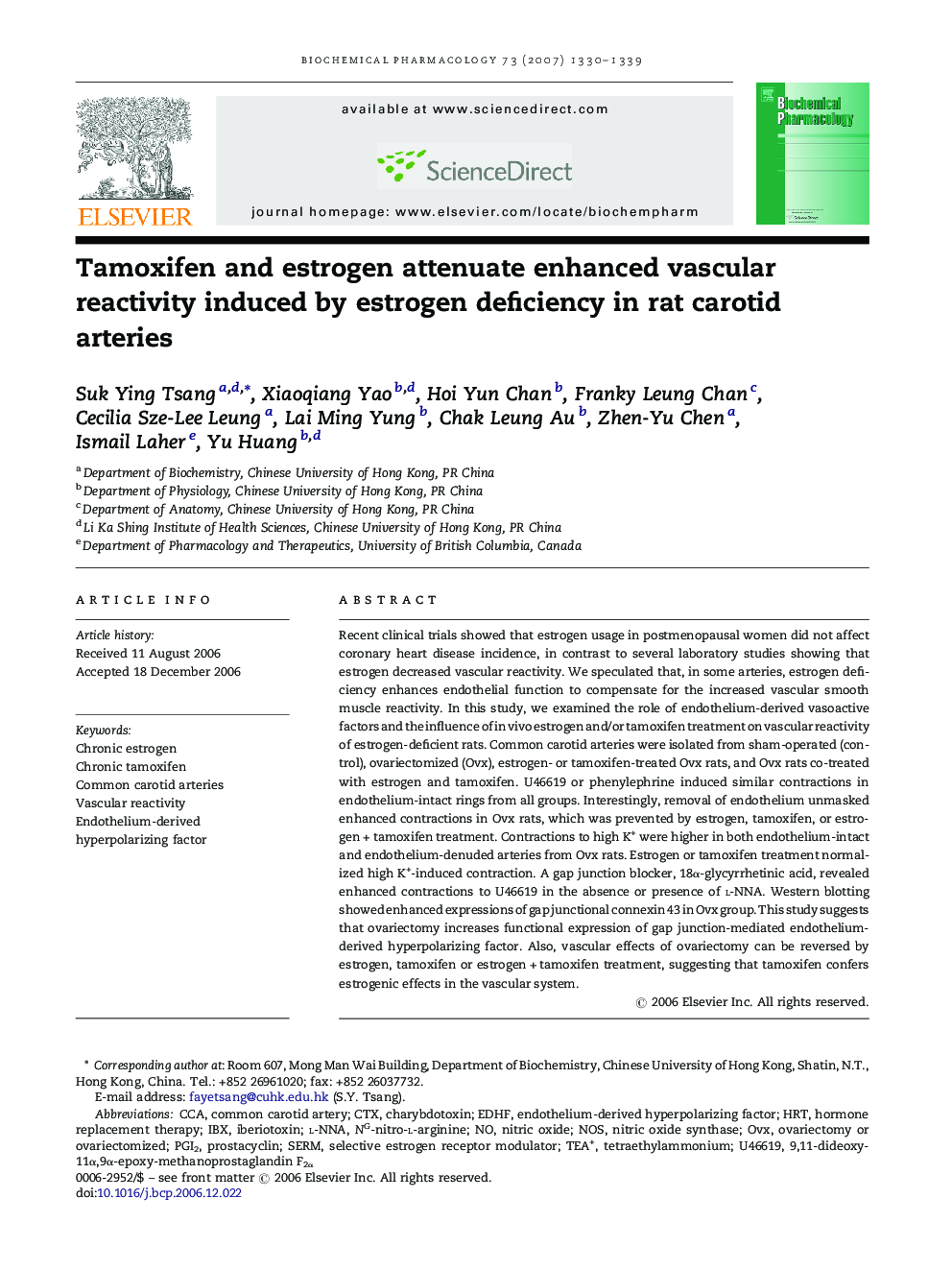| Article ID | Journal | Published Year | Pages | File Type |
|---|---|---|---|---|
| 2515710 | Biochemical Pharmacology | 2007 | 10 Pages |
Recent clinical trials showed that estrogen usage in postmenopausal women did not affect coronary heart disease incidence, in contrast to several laboratory studies showing that estrogen decreased vascular reactivity. We speculated that, in some arteries, estrogen deficiency enhances endothelial function to compensate for the increased vascular smooth muscle reactivity. In this study, we examined the role of endothelium-derived vasoactive factors and the influence of in vivo estrogen and/or tamoxifen treatment on vascular reactivity of estrogen-deficient rats. Common carotid arteries were isolated from sham-operated (control), ovariectomized (Ovx), estrogen- or tamoxifen-treated Ovx rats, and Ovx rats co-treated with estrogen and tamoxifen. U46619 or phenylephrine induced similar contractions in endothelium-intact rings from all groups. Interestingly, removal of endothelium unmasked enhanced contractions in Ovx rats, which was prevented by estrogen, tamoxifen, or estrogen + tamoxifen treatment. Contractions to high K+ were higher in both endothelium-intact and endothelium-denuded arteries from Ovx rats. Estrogen or tamoxifen treatment normalized high K+-induced contraction. A gap junction blocker, 18α-glycyrrhetinic acid, revealed enhanced contractions to U46619 in the absence or presence of l-NNA. Western blotting showed enhanced expressions of gap junctional connexin 43 in Ovx group. This study suggests that ovariectomy increases functional expression of gap junction-mediated endothelium-derived hyperpolarizing factor. Also, vascular effects of ovariectomy can be reversed by estrogen, tamoxifen or estrogen + tamoxifen treatment, suggesting that tamoxifen confers estrogenic effects in the vascular system.
